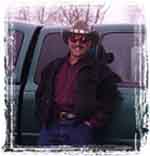The “Sucker Punch”: Parrots, notably the African grey, will put their head down, as if wanting to be scratched. But the moment you begin to rub its head, it reaches around and gives you a big nip. Avian behavioral consultant Liz Wilson has coined this “the sucker punch” and says when the bird has its head down with eyes looking to the side or closed, it is usually prepared to bite.
Eye pinning: In some parrots with light colored eyes, you will notice the pupil dilating in and out when the bird becomes excited. This happens a lot in Amazon parrots, macaws, Poicephalus, and greys, but is not uncommon with any parrot. Eye pinning means a heightened excited state, so this isn't a good time to stick your finger into your parrot's face –you might just get a bloody finger.
Tail flaring: Birds shake their tails after preening or to release tension, but tail flaring is different –this is when the tail feathers are flared out like a fan. Amazons are prone to this, but other types of parrots do this as well. This indicates an excited state, and often appears with eye pinning.
Beak clicking: The clicking of the beak can indicate an excited state, but can also be a warning to stay away.
Feather fluffing: A bird will ruffle and fluff its feathers after preening to remove debris, and will also fluff its feathers when it's cold. If a bird has its feathers continually fluffed, it may be ill and is trying to keep warm.
Beak wiping: A bird will wipe its beak on a perch or cage bars after eating to remove debris. This is normal behavior and is nothing to worry about.
Crest position: Some birds, like cockatiels, cockatoos, and hawk headed parrots have head crests that are raised or lowered to indicate emotional state. If you have one of these types of birds, watch to see what prompts the bird to raise its crest - is it excited, fearful, or happy?
Shivering: Birds shiver and shake after taking a bath -- their breast muscles involuntarily contract and expand to create heat in the body. A bird may also seem to shiver when it's very excited. Quaker parrots are known to "quake," which is how they got their name.
Flapping wings: Birds often hold tight to the perch and flap madly as if wanting to take off in flight. They do this for exercise and when they're happy, and it can also be part of breeding behavior.
Head bobbing: Head bobbing can indicate that a bird is anxious to go somewhere, or perhaps is regurgitating to you in an effort to bond with you. Very young parrots bob their heads a lot, as do Quaker parrots.
Read the entire article here: Reading your parrot’s body language can help relationship.







No comments:
Post a Comment